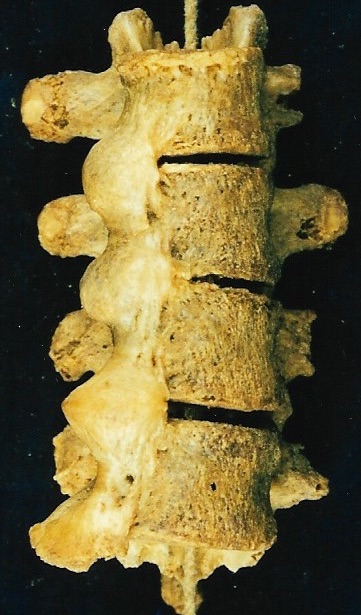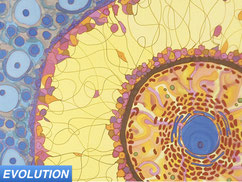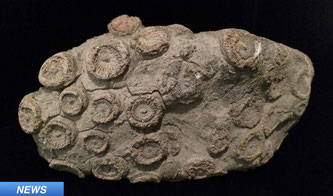
Today’s "wacky things that can happen to you" focuses on a spinal condition in which the ligament that runs vertically up the front of your spine from your head to your tush turns into bone. The condition is called Diffuse Idiopathic Skeletal Hyperostosis (DISH for short) and the picture associated with this article is what it looks like - blobs of oozing bone stuck to the front of vertebrae.
It’s a complicated name so here’s a quick translation: Diffuse = it can happen throughout the body; Idiopathic = we have no idea why; Skeletal = the body’s coat hanger; Hyperostosis = turning into bone. Quick backup - DISH can occur throughout the body but it’s most typical in the spinal column plus we have this cool picture.
Moving on - DISH is an age related condition that typically doesn’t occur until a person is at least 40. It’s like a “welcome to middle-age” birthday present whose friends include mammograms and colonoscopies. The ossification, another term for turning into bone, usually occurs in the thoracic section of the vertebral column. The thoracic section is the bit in the middle. The vertebral sequence begins at the head with seven cervical vertebrae followed by 12 thoracic vertebrae and ending with 5 lumbar vertebrae.
Is DISH a bad thing? Glancing at the picture and saying that your anterior longitudinal ligament just turned into a bone would kind of point to “yes, that’s a bad thing. How silly of you to ask.” And lots of researchers have gone down that path, labeling DISH as a degenerative arthritic condition. However, there’s another school of thought that hypothesizes the condition is actually helpful or adaptive.
Logic behind considering DISH an adaptive trait hinges on a few factors. First, as we mentioned, the ossification usually occurs in the thoracic section of the vertebral column, an area where we humans (yogis aside) have the least flexibility. Second, and this one is the real kicker, a hallmark feature of DISH is maintaining the space between vertebrae when the ligament turns to bone. Known as the intervertebral disk space, that space is what keeps us moving without pain. When the disk space collapses people end up with degenerative disk disease and other painful arthritic conditions.
If you look past the shocking bit of bone ooze on the left, you can see the nice even spacing between the vertebrae in the picture on the left. By turning into bone, the ligament ends up functioning as a stabilizing rod, providing structural reinforcement to the spine and preventing damage that would be caused by bones in contact with each other. The typical age of onset for DISH is 40 and up, so the structural calvary shows up as people enter an age more prone to arthritis and degeneration.
Welcome to 40. But if you’ve hit that milestone and you’re suddenly concerned about a little ligament transfiguration, just know that as a condition, DISH is a lot older than you are. DISH has been found in archaeological sites all over the world and has even been found in other species. The mighty dinosaur has been known to have a touch of DISH in his tail and while things didn’t go too well for him, dogs, horses, and whales oh my have also dealt with DISH. Which just leaves one thinking, one DISH, two DISH, human DISH, dinosaur DISH.



